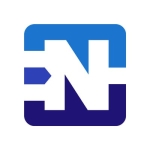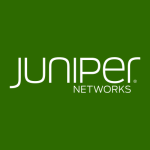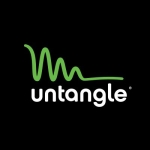What is our primary use case?
It is for defense, protecting workloads from a distributed type of an environment. On-premises, we are hosting several different distributed user session type environments. In our case, it is remote desktop services, which enable users to go out and browse the Internet, in some cases to do legitimate services, and in other cases, it is more of a personal browsing session. In this case, the primary purpose is to protect those user sessions when they are accessing the Internet. The secondary use case is to protect these services and applications from inbound threats, e.g., Internet scanning, Internet exploit attempts, any sort of attack, reconnaissance, or anything of that nature coming from the public Internet.
Firepower is an add-on to Cisco ASAs that enables intrusion prevention detection and some additional advanced functionalities. We have both.
We have two on-premise data centers where Firepower is deployed.
How has it helped my organization?
In terms of logging, that has been a big benefit because it is a fairly straightforward and easy process to log results. We stream through a folder and that information goes out to Splunk. It delivers immediate value. While Firepower reporting is generally pretty good, there is some delay, as far as when information shows up and updates the internal Firepower reporting mechanism. What we found is if this information is streamed into a SIEM, then it can immediately apply additional enrichment on top of it and build slightly more relevant, near real-time reporting, in comparison to doing it directly from Firepower. In terms of value for Firepower data, the ability to stream that out as a log, then characterize and enrich it within the SIEM that is where we gain the most value from a security perspective.
The solution’s ability to provide visibility into threats is good. Combined with Cisco's own trend intelligence characterization as well as the creation and application of that sort of tag into the stream of data that Firepower detects, that immediately tells us which threat type it is:
- Does it belong to a threat group?
- Is it an IP block list?
- Is it a URL block list?
- Is it a known threat?
- Which threat list does it belong to?
All this additional information is definitely useful. We treat it personally as set and forget because we are in the block mode - intrusion prevention mode. We don't let threats in. We err on the side of being overly protective. This is opposed to letting in threats, then detecting, identifying, and taking action on stuff that got through. Instead, we just block it. In our day-to-day operations, normally what was blocked is generally useful, but it's not operationally important.
It is set up to automatically apply the blocks and use the threat intelligence delivered by Talos as well as the intrusion prevention rules. All of that is entirely automated.
It has improved our organization's security posture dramatically. It has definitely given us modern protection and peace of mind in terms of attacks against our infrastructure from known or emerging threats, so we can be protected against them.
What is most valuable?
Intrusion prevention is its most valuable feature because of its effectiveness. Cisco is the largest security company and one of the largest threat intelligence services with Talos. Cisco can identify and immediately apply any new threat information into signature sets for their Intrusion Prevention tools, including endpoint. In our case, we are talking about Firepower. That scope is what results in is an almost immediate application of application prevention signatures against any upcoming network attacks. So, if there is a new vulnerability, some sort of high critical value globally, the Cisco team is typically able to identify and write corresponding detection or prevention signatures, then apply them across their toolset.
It is one of the fastest solutions, if not the fastest, in the security technology space. This gives us peace of mind knowing that as soon as a new attack comes online that we will be protected in short order. From that perspective, no one really comes close now to Firepower, which is hugely valuable to us from an upcoming new attack prevention perspective.
We are using Cisco Cloud Email Security and DNS security from Cisco as well as endpoint protection. The integration between these products is pretty good. The benefit is the ability of all these disparate tools to talk to each other and be able to take action, sort of feeding each other with newly intelligent detection mechanisms and passing that information on to the next tool, then taking action on that next tool based on information identified on the first tool. That is really the biggest benefit of using the ecosystem. So, we've optimized it. We leveraged Cisco's tech response, which connects with each of these tools. We definitely find value every day.
It was very easy to integrate with the SIEM, which is really our primary use case. Besides the Cisco ecosystem, it is integrating with a standalone separate SIEM solution, which is Splunk in our case. This was an easy, simple approach to accomplish. We had no issues or problems with that.
What needs improvement?
Try to understand if there is a need, e.g., if there is a need to log this information, get these logs out, and forward to some sort of a SIEM technology or perhaps a data store that you could keep it for later. There is limited data storage on the appliance itself. So, you need to ship it out elsewhere in order for you to store it. The only point of consideration is around that area, basically limited storage on the machine and appliance. Consider logging it elsewhere or pushing it out to a SIEM to get better controls and manipulation over the data to generate additional metrics and visibility.
In some cases, I could see how SIEM is not an option for certain companies, perhaps they either cannot afford it, or they do not have the resources to dedicate a security analyst/engineer who could deploy, then manage the SIEM. In most cases, Firepower is a useful tool that a network engineer can help set up and manage, as opposed to a security engineer. To make the solution more effective and appealing, Cisco could continue to improve some of the reporting that is generated within the Firepower Management Console. Overall, that would give a suitable alternative to a full-fledged SIEM, at least on a network detection side, application identification side, and endpoint identification and attribution side. Potentially, a security analyst or network engineer could then simply access the Firepower Management Console, giving them the visibility and data needed to understand what is going on in their environment. If Cisco continues to improve anything, then I would suggest continuing to improve the dashboarding and relevant operational metrics present within the platform, as opposed to taking those logs and shipping them elsewhere.
For how long have I used the solution?
What do I think about the stability of the solution?
Once it is deployed, not much staff is required as long as the intrusion rules are specifically configured to automatically update. That is the primary thing. Then, the continuous periodic updates from Cisco apply operating system patches just to make sure that critical vulnerabilities are patched and operating system optimization is applied routinely. Strategy-wise, I would patch quarterly unless there was a critical vulnerability that Cisco would discover, then apply a patch against it. At which point, we would then patch our appliance.
The stability is very good. As far as I can tell, we don't have any issues with availability or stability.
What do I think about the scalability of the solution?
Cisco accounts for scalability by having different hardware recommendations, depending on what the throughput is, the required coverage is in terms of number of devices, the amount of traffic, etc. In our case, I don't see any issues. We are appropriately sized, but I could see how if someone's environment doubles, then someone should account for that by either procuring another appliance and separating some of the traffic flows or getting a bigger, more powerful system that can handle increase in throughput.
We try fitting to an ecosystem mentality. For example, we have four different Cisco products, which is technically a single ecosystem. If you were to think of it that way, then it is four different tools from Cisco. Then, there are two additional ones on the network, which makes six. There are additional two or three for an endpoint, plus another two or three for email, and another two or three for identities. So, I would say there are probably around 20 security solutions total.
The network team as well as the security team use it. Combined, that is approximately six people.
We are perfectly sized. I don't think there will be a need to increase the footprint or anything like that, at least for a while.
How are customer service and technical support?
I know that people typically say TAC is hit or miss. In my case, it was always a good experience. Whether it was Firepower related for licensing questions or email, I have never had any issues with Cisco TAC.
Cisco Talos is very good. They are very well-regarded and well-known. I respect the team. They know what they are doing. They are one of the best overall. They are probably the best threat intelligence organization out there. Their visibility is unparalleled, because the data that Cisco has access to and the telemetry that it's able to gather are quite amazing.
Almost all networks globally in the world are built with the Cisco products. The telemetry that it generates gives Cisco unparalleled visibility, and Talos steps into that. They are able to apply their analytics over that data and identify emerging threats before practically anyone else, but Microsoft. From that perspective, my organization appreciates what Talos is able to do. Cisco's intelligence is delivered through Talos, applying it to other products that are not Cisco, but we haven't gone down that path yet.
Which solution did I use previously and why did I switch?
We started with Firepower. It was one of the first products that helped secure our organization. We are close to sort of an advanced maturity, primarily compliance-driven. We are not there yet, but we are close to it. We are somewhere sort of in the high to middle area. We have sort of a high compliance-driven security and close to the compliance-driven area, but still slightly below it. We are still fine-tuning and implementing some security technologies. Then, within a year's time, these will be simply managed and audited.
How was the initial setup?
In my current place, I did not help set it up, but I did set it up previously as a dedicated intrusion detection and prevention tool with another security engineer. Honestly, the setup was pretty straightforward. This was a couple of versions behind. It definitely has well-understood requirements from a virtual machine and resources required perspective. No questions that came up.
For the dedicated intrusion appliance, we needed to identify where the most benefit would come from, so we identified the network space. The sort of choke point where we could apply the Firepower appliance in order to inspect the most traffic. In terms of efficiencies, the primary goal was to identify how to maximize the visibility using Firepower. We deployed it in a choke point and ensured that most of the traffic for the company goes through this intrusion appliance and the initial deployment occurred in a visibility mode only - No blocking, intrusion detection only. Then, with time, as we got comfortable with all the traffic that was being seen with a signature application across the traffic and understood the chances for false positives were low to none. At that point, we put it into prevention.
What about the implementation team?
If we needed to address something with Cisco directly regarding Firepower support, that was also addressed fairly quickly with no issues.
What was our ROI?
The automated policy application and enforcement saves us at least a third of an FTE per day. In terms of time, that is about 30 percent per day. By deploying the solution, we are saving $600 a week, which is significant.
In some cases, resources, like a security engineer, are actually hard to come by because they are expensive. Substituting some of that engineering time with an effective technology, like Firepower, is probably a good strategy.
What's my experience with pricing, setup cost, and licensing?
I know that licensing for some of the advanced solutions, like Intrusion Prevention and Secure Malware Analytics, are nominal costs.
Which other solutions did I evaluate?
I have used one of Cisco's competitors and am fairly familiar with it: Palo Alto. I am also familiar with the Barracuda solution. I would say Palo is comparable with Firepower to some degree. The Barracuda solutions that I've used are nowhere near as close in terms of capability, metrics, user interface, or anything like that to Cisco.
Palo Alto and Cisco are about the same in terms of application visibility, user assignments, and attributions. They are comparable. On the threat side is where I think Firepower is better. It's able to identify and characterize better. It's also able to deliver metrics around that information in a clearer fashion. As an example, it is easier to extract fields and values in the log. It seems that the design of the appliance was focused around security, which is evident in how that information is being presented, both in the Firepower Management Console as well as in the log.
What other advice do I have?
On the IT infrastructure side, we are using Cisco hardware for the network. Then, as a security team, we are looking at adding Cisco's incident response solution, but we have not done it yet.
Firepower provides us with application visibility and control. We don't utilize it to the fullest extent. We rely on some additional tools like DNS, to identify applications being used across our endpoints. However, the Firepower deployment primarily protects the servers. So, on the servers, it is a controlled environment. Therefore, we do know the applications and services being used and deployed out of the servers.
Applying something like this to protect yourself from the Internet, which is where most of the threats come from, besides email. It guarantees that you are able to refocus your energy on internal processes: endpoints, people, etc. Intrusion Prevention is effective because it helps security teams refocus their efforts to build out other components, such as security pillars of the organization.
The solution is effective. My initial exposure to Cisco started through Firepower, since then I have understood that Cisco is moving towards an ecosystem approach. Basically, Firepower represents what I think Cisco stands for.
I would rate the solution as a nine (out of 10).
It does what it needs to do and does it great with a good sense of confidence, allowing the team and me to focus on other things. If needed, we can always leverage that data to derive different values from it.
Which deployment model are you using for this solution?
On-premises
Disclosure: PeerSpot contacted the reviewer to collect the review and to validate authenticity. The reviewer was referred by the vendor, but the review is not subject to editing or approval by the vendor.

















